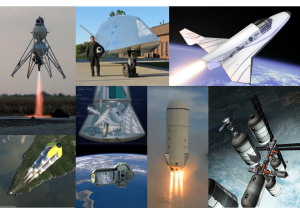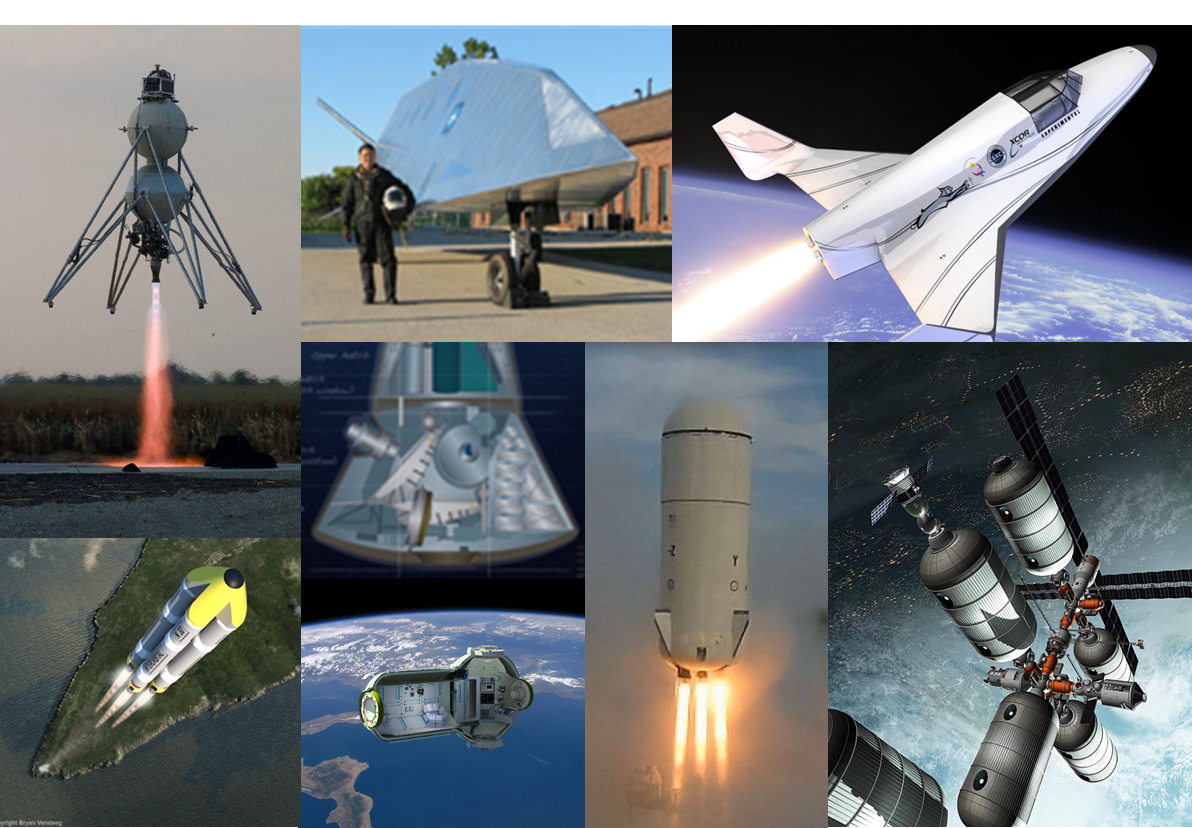Outer space is hard. Outer space is expensive. Outer space is risky. So why are companies lining up to go there?
The “Space Race” of the 20th century wasn’t about profit. It was a war for ideological dominance. The United States versus the Soviet Union, Capitalism versus Communism, Freedom versus state control.
With the Apollo landings on the Moon that race to the high ground of space came to an end. The competition vanished. Both countries moved towards cooperation in space and the sharing of technology. Today there is a renewal of national competition. But this time it is not the United States versus the Soviet Union’s successor, Russia, but a new emerging global giant, China. China, however, remains at least a decade behind in building its space technology. So the nationalistic drive to the high ground of space is no longer all that urgent. Not only that current economics have made the cost of space an issue.
Having said that more countries have space programs than ever before. Many of these programs are in the Developing World. Many programs are a reflection of the competition between neighbouring states in the same way the United States and Soviet Union fought to hold the high ground. But most of countries going into space are building launch capability to deliver satellites into low-Earth or geosynchronous orbit above the planet to gain the benefits of telecommunications and remote sensing. They are not focused on human space flight.
Companies have been in space for some time. They have put satellites in orbit for profit. Telecommunications providers, resource and mining companies, all have either launched or bought time or data from Earth-orbiting satellites. But none of these companies are in the human space flight business.
The military remains engaged in space. The high ground of space provides unprecedented views of what’s unfolding on Earth below. So that makes sense.
And of course the global scientific community continues to go into space to view, sense and collect data about Earth from above and to study other parts of our Solar System, and star systems beyond. The military and the scientists are happy to use robotic spacecraft for these missions.
And finally science is conducted on the International Space Station in the interest of multi-nation cooperation and discovery. Some companies, universities and of course governments fund the activities on the station.
So what do for-profit businesses hope to attain more than they have already by getting involved with the sending of humans into near-Earth space and then to asteroids, the Moon and Mars?
The Lesson of Columbus
When Columbus departed from Spain in 1492, his motivation was to find new trade routes and establish commercial relationships with those who he met along the way. It wasn’t about discovery and exploration.

Columbus and his investment partners, the government and members of the Spanish court, were out to make money from the Spice Trade. They wanted to cut out the middlemen that drove up the price of spices sourced from East and South Asia. By establishing direct trade with Asia they would accomplish this goal. What they didn’t anticipate was running into the Americas but once they did and the route became charted and established they exploited America’s commercial value by seizing assets from its native population and eventually transporting citizens to manage the assets.
But the Spanish monopoly was short lived and the country soon found itself in competition with other European governments and government-sponsored private ventures from Portugal, France, England and the Netherlands who all had the same thing in mind, profit from trade and wealth from resource exploitation. For exploration of the Americas was funded by greed and the capital infusion Europe experienced led to its predominance on the planet for more than three centuries, and ultimately to the stormy upheavals of two world wars in the 20th century.
What European nations started once the high risk was taken out of the equation, European enterprises continued. Companies, not just governments established human colonies in the Americas. The ultimate superpower of the Americas, the United States, reflects this mix of business and government conjoined to push back and exploit the American frontier.
The Privatization of Space
Space is not unlike the discovery of the Americas by Columbus. Governments were the first to finance ventures in this “New World.” Once the risks were reduced private citizens and businesses established themselves. That is what is about to happen in low-Earth orbit in space.
The recent successful rendezvous and docking of the SpaceX, Dragon capsule with the International Space Station represents a first step towards private enterprise getting involved putting humans in space. Not that Dragon had any humans on board but the capsule’s clear intent, according to Space X’s founder, Elon Musk, is to do just that.
SpaceX is not alone in its goal. At last count 25 companies are developing technology for human spaceflight. A partial list includes companies such as:
Armadillo Aerospace – developing suborbital and orbital power ascent and descent capsules.
Bigelow Aerospace – building expandable space habitats for human occupancy.
Blue Origin – suborbital and orbital reusable launch vehicles capable of powered descent.
Copenhagen Suborbitals – a Danish company planning to built micro-sized spacecraft for individual suborbital human flight.
Excalibur Almaz – based on a Soviet technology that flew in the 1980s the company is building technology for human flight to low-Earth orbit, asteroids, the Moon and beyond.
Interorbital Systems – building a modular orbital launch vehicle called Neptune that can be configured for launching a crew of 6 into low-Earth orbit.
Orbital Technologies – a Russian company with plans to create a commercial space station as early as 2016 and place it within 100 kilometers of the International Space Station.
PlanetSpace – developers of the Silver Dart, a hypersonic glider designed to operate as an orbital vehicle.
Reaction Engines Ltd. – UK developer of a reusable space plane, the Skylon, suitable for launching satellites and human passengers.
Scaled Composites – developer of SpaceShipOne and SpaceShipTwo for human suborbital flights.
Space Adventures – since 1998 has been arranging for private citizens to fly in space with existing national space carriers and plans to send a private mission to circumnavigate the Moon.
Sierra Nevada Corporation – developers of Dream Chaser, a commercial orbiting glider with a 7-crew capacity, based on the NASA cancelled HL-20 that resembles a mini-Space Shuttle.
XCOR Aerospace – developer of human-manned, rocket-powered aircraft with 67 successful flights to-date, with plans to build a reusable launch vehicle, the Lynx, for suborbital and eventually low-Earth orbit flights.
Many of these companies will fail but some will succeed in their initial efforts, attract more investment, and expand their operations. That’s the way of risk-taking businesses and in low-Earth orbit, at least, the risks are low enough now to attract for-profit ventures. As Deep Space is explored by governments and proved to be doable, then private companies will follow.

There are many challenges that commercial space enterprises face going forward. Among these is the issue of ownership of what they find and exploit. For example if commercial space enterprises move beyond Earth orbit and mine asteroids or the surface of the Moon, what body or institution will govern who owns what?
In 1966 the United Nations agreed on a common set of principles governing outer space. Resolution 2222 of the General Assembly provided a framework for international law that stated:
- The use of outer space will be carried out in the interests of all member countries and for all humanity.
- Outer space will be free for exploration and use by all member nations.
- No nation can claim sovereignty over any part of outer space.
- No nation will militarize space by placing weapons of mass destruction in orbit or on any space object.
- The Moon shall be used for peaceful purposes exclusively.
- All humans in space will be considered envoys for humanity.
- All nations will be responsible for space activities whether carried out by the government of those nations or by non-government entities.
- All nations will be liable for any damage to space caused by their activities in space.
- All nations shall avoid contaminating space and any space object.
This law was created in a geopolitical world far different from the one we live in today. Space activities are no longer just the actions of nations. If private companies start mining asteroids (Planetary Resources for one) or Mars One successfully begins colonizing that planet in 2023, or a major mining company sets up Helium 3 mining on the Moon, the rules established in 1966 will need revision.
















